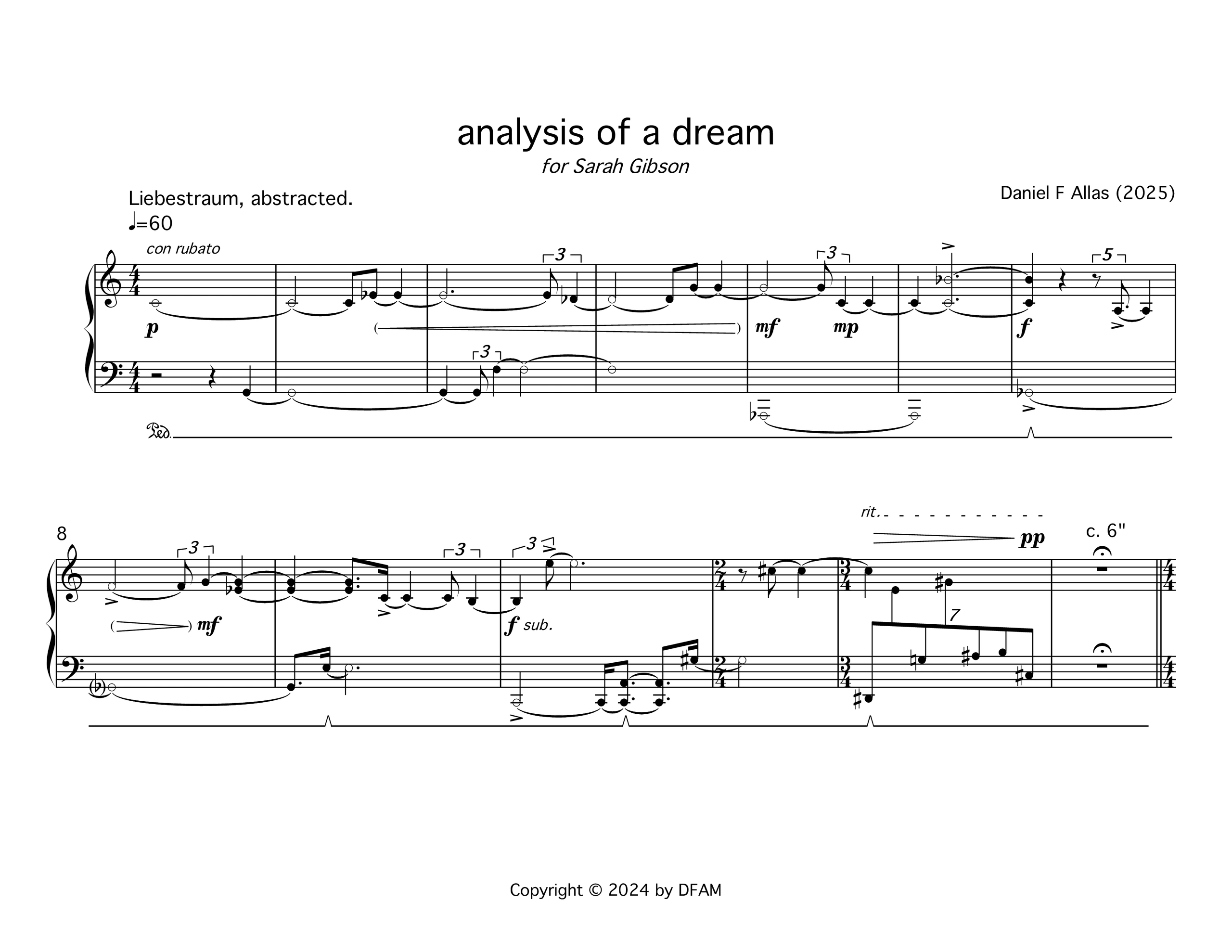

It began with analysis, by choosing one note from every measure of Liszt’s Liebestraum and lining them up in a row, a catalogue. I was rending a dream from the “love dream”. And then I read the poem that Liebestraum was based on, which contains these uncanny first lines: “O love, love as long as long as you can/O love, love as long as you may/the time will come, the time will come/when you stand at the grave and mourn”. So now, this dream involved love and death, and I was contemplating both ideas together and trying to pin down why it made sense to do so. Love, in every instance of its true form, contains the threat of loss (the fear of death or some other end). And there is also something within love’s concept that compels us to persist in spite of this fear, despite death. I was working at a library while composing this piece, and in the book stacks I stumbled upon a collection of “jisei” (the poems that some Buddhist monks write on their death bed, their “death poem”). Their subject matter varies. Some “jisei” mention life being a dream, or describe a crystalized image of nature; others relish their last fart. So many different poems. So many different ways to die. I translated my favorites into musical pitches…into the scent of syllables…atomized them and sent them floating through the air (like that last fart, or maybe like lasting grief). And as I placed these two types of music-poems together (Liebestraum with “jisei”), their flickering tonal centers reminded me of a piano piece that Toru Takemitsu wrote in memory of his friend (titled Litany) – and this third type of poem asked to enter the dream. It’s inclusion was my way of memorializing my own friend, Sarah Gibson, who passed away as I wrote this piece. I have this set of pictures of Sarah and myself on our first day working together at the LA Phil. We took photos of our reflections in the Walt Disney Concert Hall’s metallic panels, our images so horribly disfigured in the overlapping tiles it made us laugh out loud. There is so much vibration, so much movement in those pictures. Her smile slides in between the colors of her shirt, splits and ricochets through two of the silver panes. This is my attempt to explain how the piece materialized, dreaming up a poem about love, death, and a friend who is gone. I experience dreams in a similar way as to how I composed this piece: the rationale is not so clear at first, but the dream images express something insistently real and true. Like how, in a dream, you might start off kneeling in your childhood bedroom, which is also somehow a graveyard, and as you stand up you barely notice how the walls become a concert hall, and a pianist plays Liszt on a stage behind the tombstones…
Recorded/mixed by Richard An